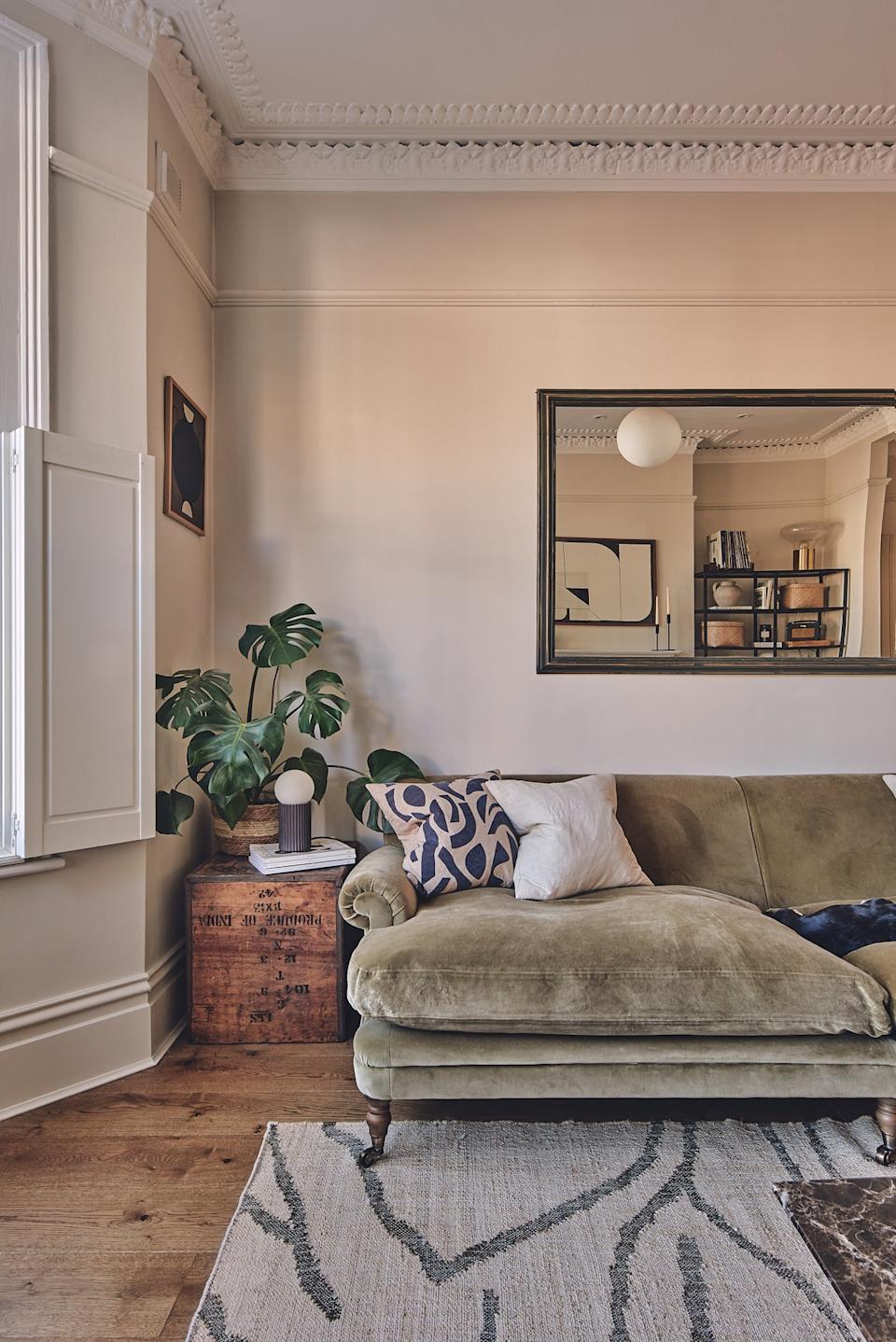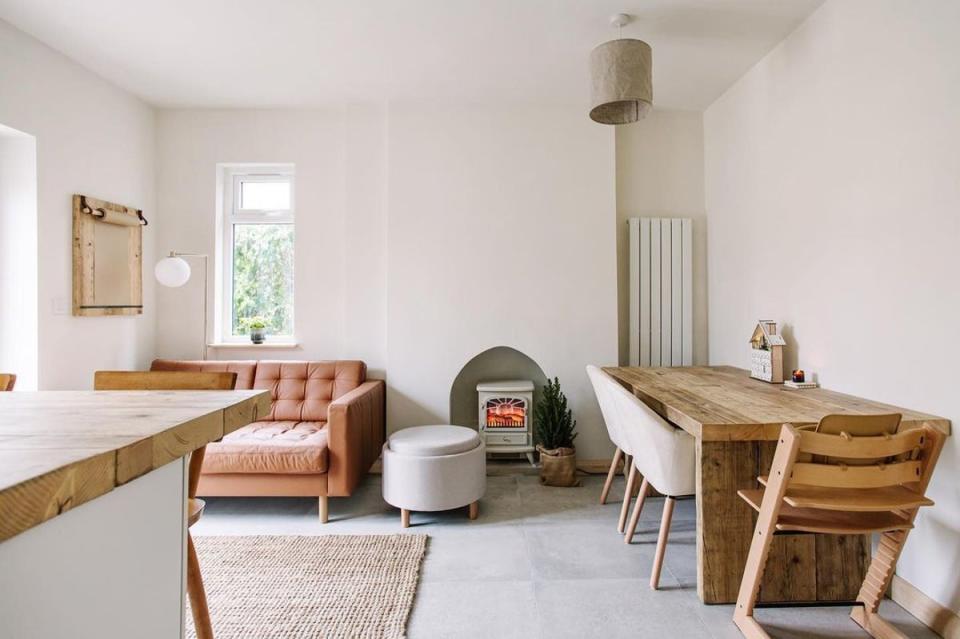Magnolia: is the UK’s most-hated paint colour making a comeback?

Natalie Louise Burrows lives in military barracks in Bedfordshire with her husband, who has served in the armed forces for 20 years. Her home is almost perfect: there is a river outside with a weir and resident swans, ducks and deer. But there is one problem: the magnolia walls. And it’s all of them.
“It’s just a nothing colour,” says Burrows, who is a nutritional therapist and functional medicine health coach. “It’s not a colour that gives character and it’s not white, so the place feels dull, a little dark, and not very fresh.”
Like many properties, magnolia is standard issue in Burrows’ home. She’s covered her office in medical illustrations and changed the curtains, but the magnolia has unfortunately remained. “Alas, we’re six years on, and have a confirmed four more to go in this home.”
Once ubiquitous, magnolia —a warm, buttery-yellow shade of white— has had a dramatic fall from favour over the past 40 years. It has become the colour we love to hate.

Now, perhaps, the winds are changing. Along with a panel of international design experts, Dulux recently crowned Wild Wonder, a warm, barley-coloured shade, its Colour of the Year for 2023. Darker with a brownish-green tint, it’s not magnolia – but the similarities are there.
Dare we say it: is magnolia making a comeback?
Magnolia’s heyday
Let’s rewind to the 1980s. There is chintz, wood panelling and floor to ceiling drapes. But above all, there is magnolia.
“If there was a defining colour from the 1980s décor, it was magnolia,” says Dulux. “Like an antidote to the vibrant pop art-inspired colour blocking that preceded it in the 60s and 70s, magnolia paint went back to basics with its pleasing neutral tone of cream with a pinkish tinge.”
Magnolia’s popularity wore on into the 90s. It became the colour of choice for rentals – hygienic but not sterile; inoffensive but not white; warm but not overbearing. It straddled a convenient middle ground.
According to Dulux, it was the advent of purple later in the 90s that finally loosened magnolia’s vice-like grip on interiors. While other neutrals —beige, off-white, greige—rose in popularity, magnolia slowly began to fade into the background. It became —and remains— one of the most polarising wall colours.
The case against
“Magnolia is a Marmite – people either love it or hate it,” says Chloe Weller, an interior designer at London-based Topology Interiors. Aiming to provide an affordable design service, Weller says that she has never had a client ask for magnolia walls – although has met plenty who want theirs gone.
“I think it’s a thing of the past – it feels dated to me, and it can make a room feel quite flat. That might be because of the 90s connotations. It became a very standard neutral colour, where every wall and ceiling were painted magnolia, whereas nowadays there are a lot more options.”

Ash Appleton, an Interior Therapist and “die-hard colour evangelist”, agrees. “I try to steer people away from magnolia by cautioning that they’ll have to work extra hard to create a dynamic, engaging space if they use it.
“Magnolia has a way of draining energy from a room. You need loads of texture, great art, layers, variation in scale and shape to make a room sing. Personally, I prefer white as a backdrop colour, which you then layer other colours onto. Artwork pops beautifully against a white wall. White is also classic, timeless and versatile.”
Both Appleton and Weller say that they have seen a greater appetite for colour since the pandemic. Weller says: “I think because of the pandemic, everybody is feeling braver about colour in the home…It’s much less common to see all-neutral, minimalist rooms.”
Appleton adds: “There’s a real yearning for uplifting, joyful spaces that also serve as a refuge from an increasingly uncertain future. Magnolia just doesn’t capture the post-pandemic Zeitgeist.”
Colour need not mean all-out maximalism, both designers argue. Pops of colour —be it paint, furniture or artwork—express personality, and can make a space more uplifting.
Appleton says she has noticed a move towards shades from nature, particularly greens, as well as fresh, earthy colours like blush pink, coral and sky blue, as clients look to “bring the outside in”.
The revival
No amount of colour, however, is enough to banish neutrals completely from our homes. Nadia McCowan Hill, Resident Style Advisor at Wayfair, argues that neutrals —including magnolia— are having a resurgence. “The pendulum is now swinging back the other way and we are once again craving the quiet reassurance and uplifting effect that only a creamy neutral can bring.”
She adds: “The trick to working with this once pariah tone is to pair it thoughtfully.” Matching magnolia with other earthy neutrals is a solution, as well as adding soft, comforting finishes, like sheepskin, chenille or shag.
Ellora Coupe, an interior designer who runs Home to Renovate, an interior advice community for women, is also pro-magnolia. "I think magnolia is a beautiful heritage hue that still has a space in today’s homes. It’s calming and natural and can work in any room beautifully with the right furniture or offsetting white woodwork.”
Coupe says she has noticed a spike in interest for magnolia recently – but it is often in disguise. Brands, she says, are renaming the colour to escape the stigma surrounding it.
A Trojan horse?
Coupe has a point. While Dulux continues to offer magnolia under its original name, other paint brands have eschewed it altogether. Farrow & Ball, for example, offers several shades of yellowy white but under smart new names: House White; Tallow; New White.
Rob Abrahams, the co-founder of eco paint brand COAT, says they have devised their own take on the colour, called Pampas. “[It’s] an off-white providing the same warmth but with a grey pigment, creating a bright and clean space without the overpowering yellow undertones,” he says. Pampas, says Abrahams, has been their third most popular paint over the past three months.
Still, COAT’s Colour Curator, Aaron Markwell, denies the possibility of a magnolia revival: "I think to the relief of most, magnolia isn’t making a comeback. Creamy, peachy neutrals are on a little bit of a resurgence at the moment — but usually with the addition of a black or grey pigment to soften them off and make them look earthier.”

Back in her home in Bedfordshire, Natalie Louise Burrows is allowed to paint her walls a different colour — as long as they are eventually returned to magnolia. And so, initially unsure about how long they’d be posted there, she left the walls as they were.
This is thing about magnolia: like a weed that grows back thicker when removed, it will always come back. Its name may be cursed, but magnolia lives on in different incarnations — in our homes, in paint brands, in public spaces. The question is: did it ever go away?

 Yahoo Sport
Yahoo Sport 





































